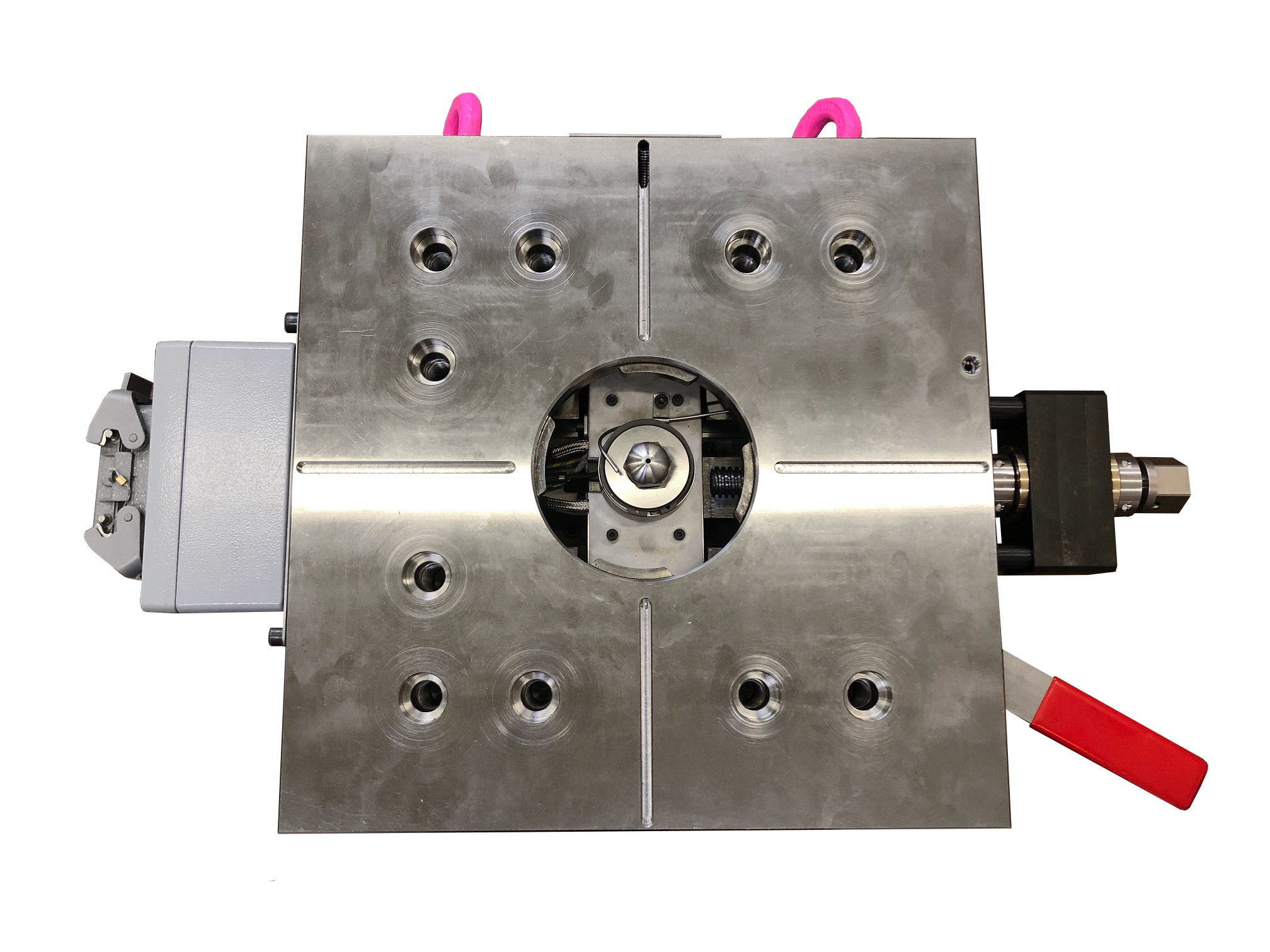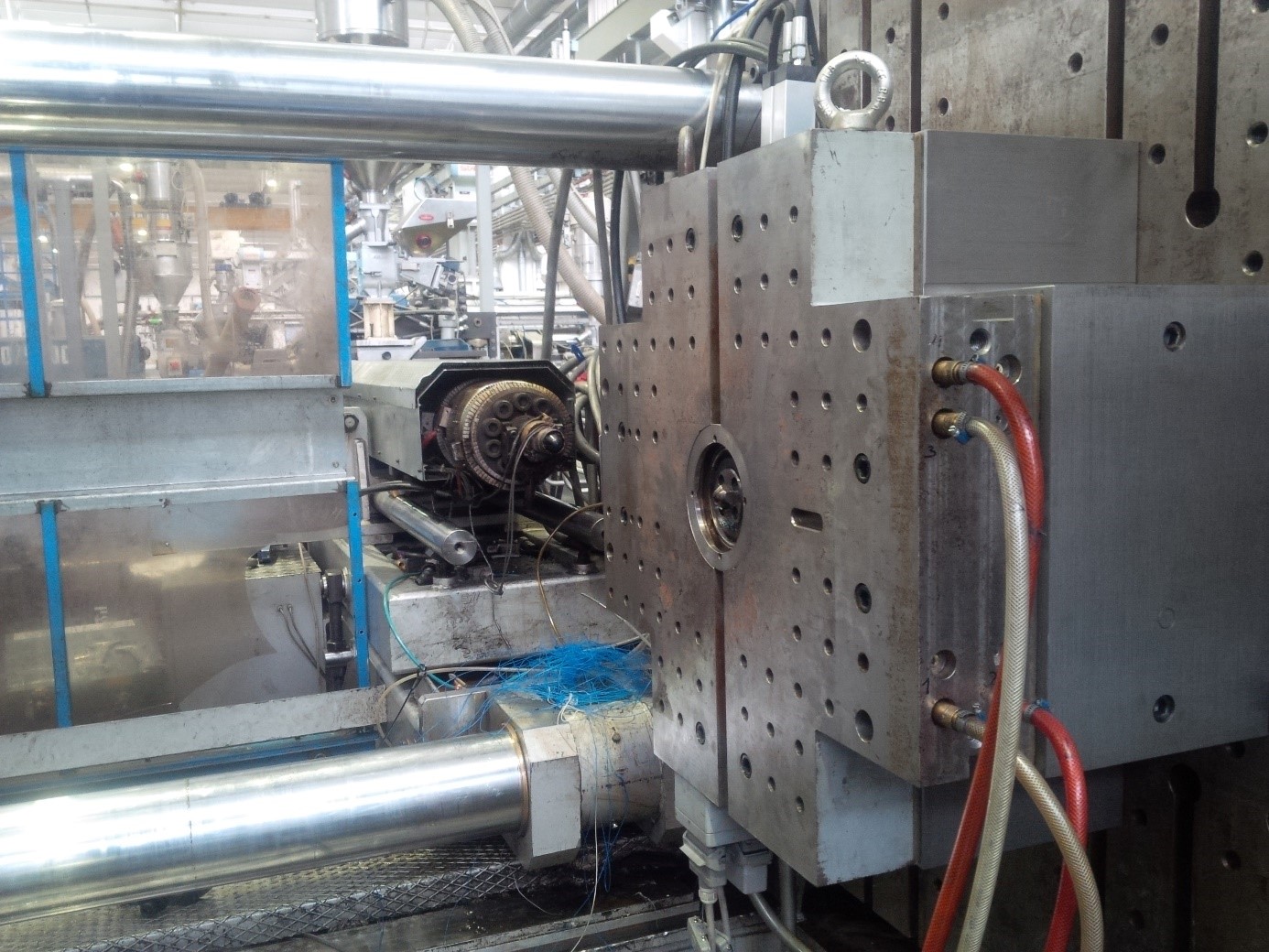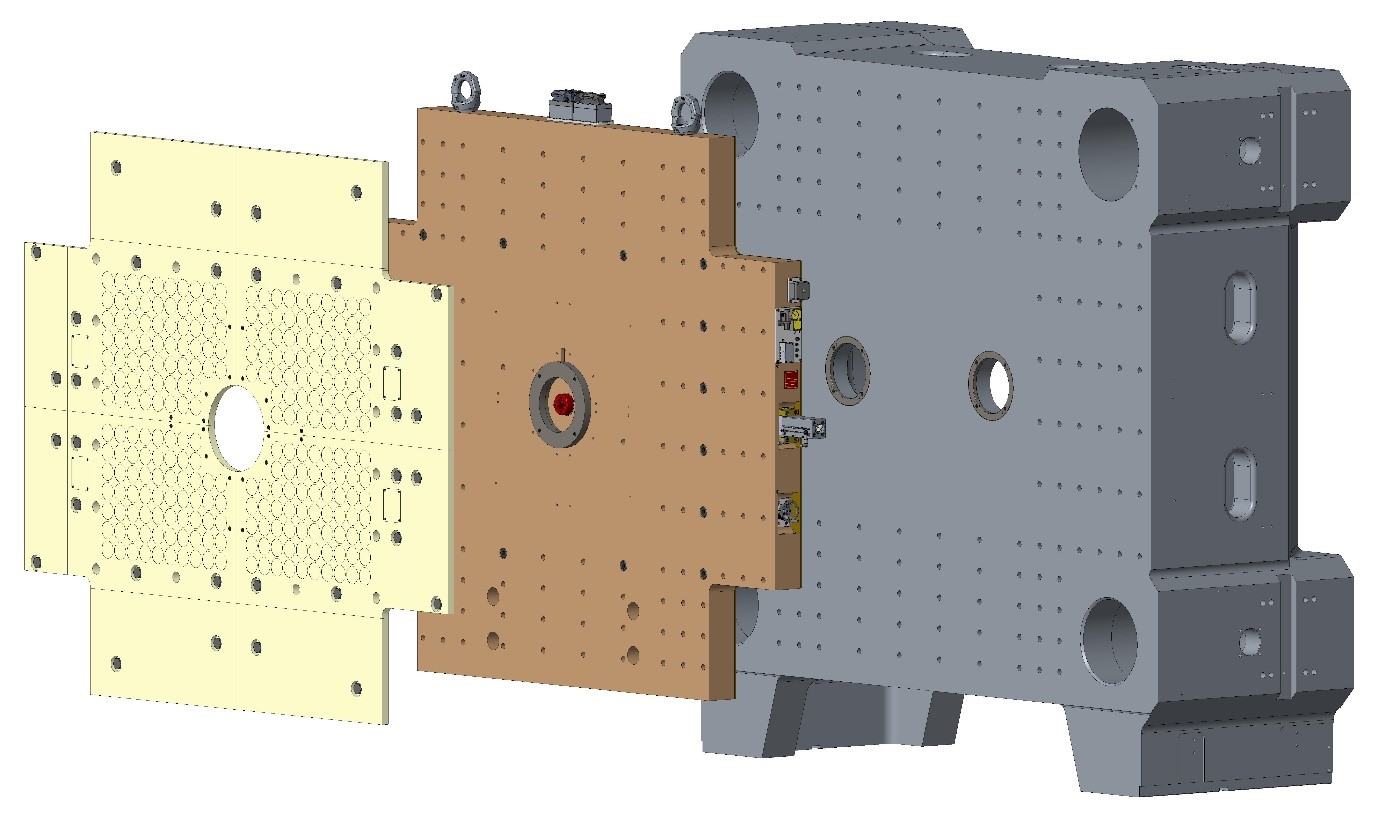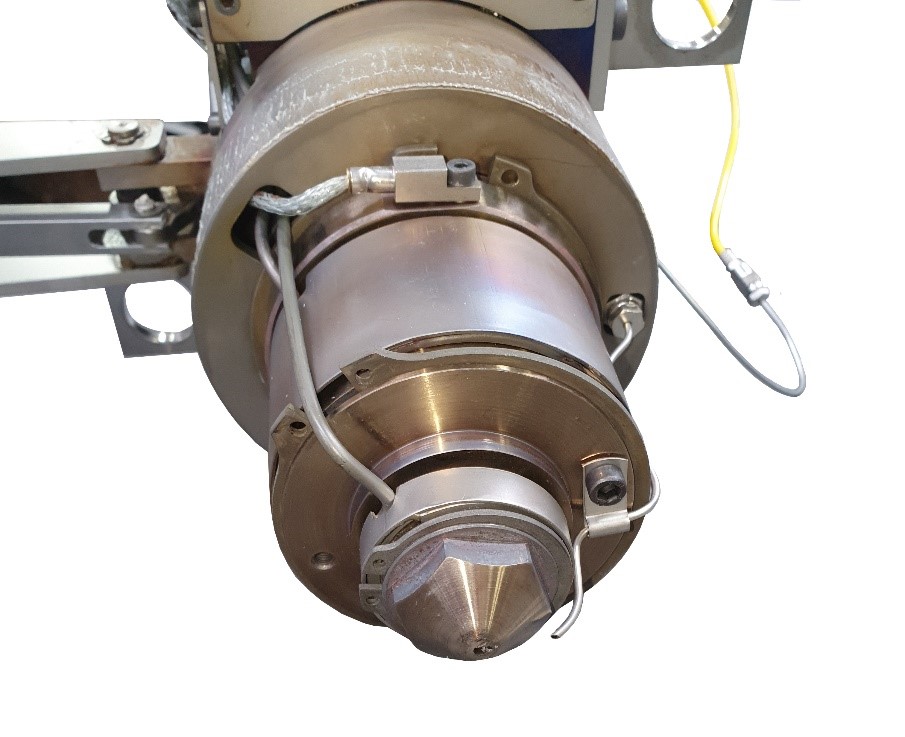Fastening of tools (moulds) in injection molding machines
Changing molds in injection molding machines can be very time-consuming and costly. With quick-release devices and hot runner adapter plates, this problem can be solved and time and money saved. A&E develops these panels on a project-specific basis.
Tools (moulds) are fastened to the fixed and moving mold platens in injection molding machines with horizontally arranged shooting units. Also in injection molding machines with vertically arranged clamping units (colloquially known as vertical machines), the installation takes place between the upper and the lower mold platen.
The two halves of the mold – the ejector-side and the nozzle-side mold halves – are fastened using clamping brackets or directly with fastening screws, which firmly connect the clamping plates of the molds to the clamping plates of the injection molding machine. It is irrelevant whether the mold mounting plates of the injection molding machines have threaded holes according to EUROMAP 2 or T-slots.
With frequent changes, especially with larger tools, the installation and removal of the tools quickly becomes a not inconsiderable time and cost factor. In order to simplify and shorten the tool change, mechanical, hydraulic and electromagnetic quick-clamping devices are offered by various companies on the market.
Requirements for frequent tool changes

Hot runner adapter plate 600 x 600 x 140mm with mechanical quick clamping device
In any case, the quick-clamping devices must ensure that the mold is firmly and thus “immovably” connected to the clamping plates of the injection molding machine and that it remains in place during the opening and closing movements as well as the build-up and reduction of the closing and nozzle contact forces, the ejector , the core pull movements and movements of other tool attachments do not lead to relative movements between the tool halves and the machine plates.
With the advent of the so-called “multi-component” injection molding technologies since the 1970s – a mold has several sprue bushes for the same or different polymer melts – injection molding machines with several injection units were also developed and built. The layers/positions of the sprue bushings on the multi-component molds are determined by the molded part to be produced. The layers/positions of the injection units of the injection molding machines must then be designed in such a way that the nozzles of the injection units reach the respective sprue bushings and the melt can be injected into the mold cavities.
Best practises
If a multi-component injection mold is to be installed on a machine with a different arrangement of the injection units than originally intended, the melt connections between the nozzle of the injection unit and the mold sprue bush can be restored with hot runner adapter plates. If molds are changed frequently on machines with such hot runner adapter plates, quick-action clamping devices can also be used for these applications, as two examples below show. Such hot runner adapter plates are developed and manufactured by A&E on a project or customer basis.

Hot runner adapter plate 2,900 x 1,790 x 190mm with magnetic clamping plate, assembly situation
Using a mechanical quick release unit with a hot runner adapter plate

Exploded view of magnetic chuck, hot runner adapter plate, fixed platen of the machine (from left to right)
A DEMAG ergotech 100/420-310 injection molding machine with a vertically arranged injection unit was fitted with a hot runner adapter plate, which directs the melt from the nozzle of the vertical injection unit to the center of the machine’s fixed platen, so that injection molds with the sprue bushing arranged centrally on the nozzle side can also be used could be used on this machine. The nozzle pressure force of the hot runner to the mold sprue bushing is applied via a mechanically actuated clamping device. In order to realize quick tool changes, the tool is fastened to the hot runner adapter plate using a mechanical quick-action clamping device. The clamping force is applied via a bayonet catch between the tool and the hot runner adapter plate. When the lever on the side is actuated, the bayonet lock attached to the lever engages in the counterparts attached to the tool centering and the clamping force is applied. The bayonet lock is self-locking, the tool is securely clamped.
Hot runner adapter plate for merging the melts from two horizontally parallel injection units in connection with magnetic quick-release plates
For injection molding machines ENGEL DUO 1700 2F and ENGEL DUO 2700, the melt streams of both injection units are brought together in a hot runner adapter plate onto a mold sprue bush – melt flow from “two to one”. If molds are installed that only need one melt flow to fill the mold parts, the hot runner in the adapter plate can be removed and replaced by a hot runner that only directs the melt flow of an injection unit to the centrally located mold sprue bush. Since both injection units are arranged symmetrically to the center of the fixed mold platen of the machine, the hot runner can connect the nozzle of one or the other injection unit with the mold sprue bush – melt flow from “one to one”. Another special feature of these hot runner adapter plates is that the nozzle contact forces of the injection units are absorbed in the adapter plate and the contact force of the hot runner nozzle is built up by spring assemblies in the adapter plate. The hot runner is mounted in the adapter plate in such a way that the hot runner nozzle can perform a stroke in order to reach different layers/positions of the mold sprue bushings in relation to the clamping level.
Magnetic quick-release plates are also provided for these hot-runner adapter plates, since frequent tool changes are planned in production. It is up to the customer whether to install the magnetic clamping plate between the tool and the hot runner adapter plate or between the hot runner adapter plate and the fixed machine plate.
In addition to a permanently effective clamping force of the quick-action clamping device or the magnetic clamping plate, it must be ensured that the invisible connection between the mold sprue bushing and the hot runner nozzle always remains free of melt leakage.
A&E Produktionstechnik GmbH offers a pneumatic leakage sensor for this. A small stream of compressed air flows continuously through a capillary located near the nozzle. If melt leakage occurs, the pressure in the capillary increases and the sensor control generates an optical and acoustic warning signal.
The hot runner adapter plates with the quick clamping devices or the magnetic clamping plates have been in production since 2017.

Airtect melt leakage sensor – view of hot runner nozzle with Airtect capillary
